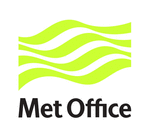
Maintained by: Simon Good
Last updated: 26/02/2013
Hosted by: Met Office Hadley Centre
© Crown Copyright
| Met Office Hadley Centre observations datasets |
| > Home > EN3 > |
Profile filesThe profile files contain observed profile data for a particular month and quality control decisions for those profiles. Some data thinning has been applied to the original profile data: a single profile for each day is averaged from the data from moored buoys that report very frequently and for data with high vertical resolution the profiles are subsampled to retain a maximum of 150 levels. Only one profile is stored within 0.2 degrees in latitude and longitude and 1 hour. Data from the ASBO project only have the day of observation so in this case only one profile is allowed per day. The profile that is retained is determined using a number of factors such as which has the most levels, which goes the deepest, the source catalogue (e.g. Argo delayed mode data are preferred to Argo realtime profiles). More information can be found in Ingleby and Huddleston (2007).The table below describes the variables that can be found in the NetCDF files.
Meaning of the QC_FLAGS_PROFILES valuesThis field contains detailed quality information about each profile. To interpret these numbers, imagine them as 32 bit binary numbers (i.e. a 32 digit number made up of either zeroes or ones). If a bit is 'set' it has value 1, otherwise it has value 0. The least significant digit is bit 0 and the most significant digit is bit 31. Each bit has a meaning as described in the table below. For example if a salinity profile is rejected then bit 1 is set. There will also be other bits set to say which quality control tests have been failed. In this example, lets assume that this profile was rejected because it is on the Argo grey list and hence bit 17 is also set. In decimal the resulting quality code will be 2^1 (bit one is set) + 2^17 (bit 17 is set) = 131074.More information about the different checks can be found in Ingleby and Huddleston (2007).
Meaning of the QC_FLAGS_LEVELS valuesThe table below describes the meaning of the bits for the QC_FLAGS_LEVELS variable, which provides detailed quality control about the individual levels of each profile. See the QC_FLAG_PROFILES section for information about how to interpret the data.
Analysis filesThe analysis files contain objective analyses produced using optimal interpolation of the profile data for a particular month and a persistence forecast background. More details can be found in Ingleby and Huddleston (2007). The analyses are produced on a regular 1 degree latitude/longitude grid and have 42 levels in the vertical. To reduce storage space not all latitudes are saved in the files.The table below describes the variables in the NetCDF files.
|
DetailsIntroductionThis page describes the EN3 files. The files are in NetCDF format and contain a number of variables and attributes. The tables on the left list the most important of these.Quality control informationTo make correct use of the profile data, the quality control flags must be read and applied. There are two ways to do this:
Older versions of the datasetThis page has been written for version EN3_v2a of the dataset but is also applicable for the previous versions. However, please note that the detailed quality control flags are not available and there are no analysis files for download for the older versions. The EN3_v1d_WijffelsXBTCorr dataset has an additional field, as described in its download page. It is also important to be aware that some of the metadata are incorrect for the EN3_v1c dataset; more details are on its download page and in the old page about file formats.Old version of this pageThe old version of this page can be accessed here.Quick linksView profile file informationMeaning of quality control flags applicable to whole profiles Meaning of quality control flags applicable to individual levels in profiles View analysis file information |
Commercial and media enquiriesYou can access the Met Office Customer Centre, any time of the day or night by phone, fax or e-mail. Trained staff will help you find the information or products that are right for you. |
 |
Maintained by: Simon Good |
© Crown Copyright
|